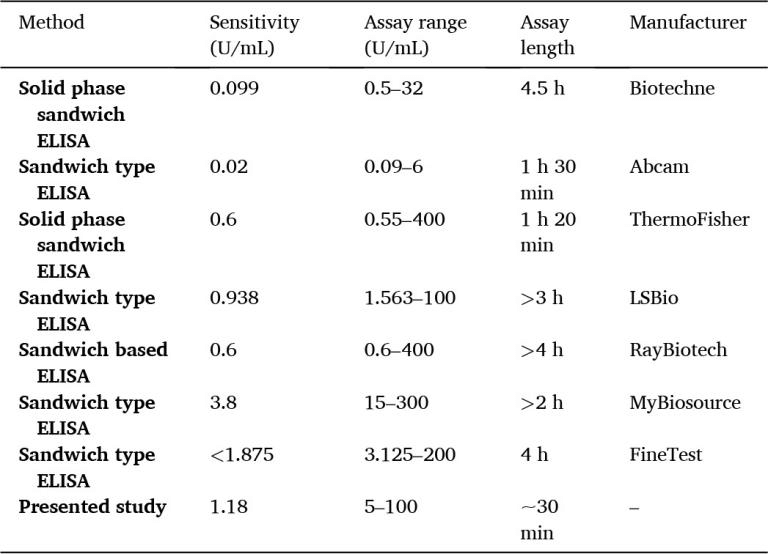FineTest Elisa kit contributes to the research on biosensing and electrochemical techniques. The immunoassay is designed to measure CA-125 concentration in serum.
Publication Details
Article Title: Boron Nitride Nanosheet Modified Label-free Electrochemical Immunosensor for Cancer Antigen 125 Detection
Journal Title: Biosensors and Bioelectronics
DOI: 10.1016/j.bios.2021.113454
IF: 10.618
PMID: 34171737
Abstract: In this presented study, a new boron nitride nanosheets modified label-free electrochemical immunosensors were prepared for early detection of cancer antigen 125 (CA125). To aim for, boron nitride (BN) nanosheets were synthesized by conventional sonication-assisted method and then characterized. BN nanosheets were used for the surface modification of the working electrode of the screen-printed electrode (SPE). Anti CA125 antibody was then directly immobilized onto the electrode surface due to its natural affinity towards BN nanosheets. Modified electrodes were blocked with BSA and finally protected with Nafion. The newly synthesized label-free immunosensor demonstrated good detection properties to CA125 with a linear range of 5-100 U and a detection limit of 1.18 U/mL. The developed immunosensor also showed excellent reproducibility, selectivity, and stability profiles. Additionally, this immunosensor was successfully used for the detection of CA125 in artificial human serum samples along with the interfering agents. Also, it is expected that the prepared immunosensor should carry the good potential for point-of-care diagnosis in real cases.
Keywords: Boron Nitride Nanosheet, CA125, Differential Pulse Voltammetry, Immunosensor, Biosensing
Immunoassay
| FineTest Product | Sample | Detection Target | Species |
| Human CA-125(CarbohydRate Antigen 125) ELISA Kit (EH0361) | serum | CA-125 | Human |
Validated Table
Table 2. Comparison of the immunosensor with commercially available methods.

Table Source: Biosens Bioelectron, 2021 Nov 1;191:113454. doi: 10.1016/j.bios.2021.113454.
